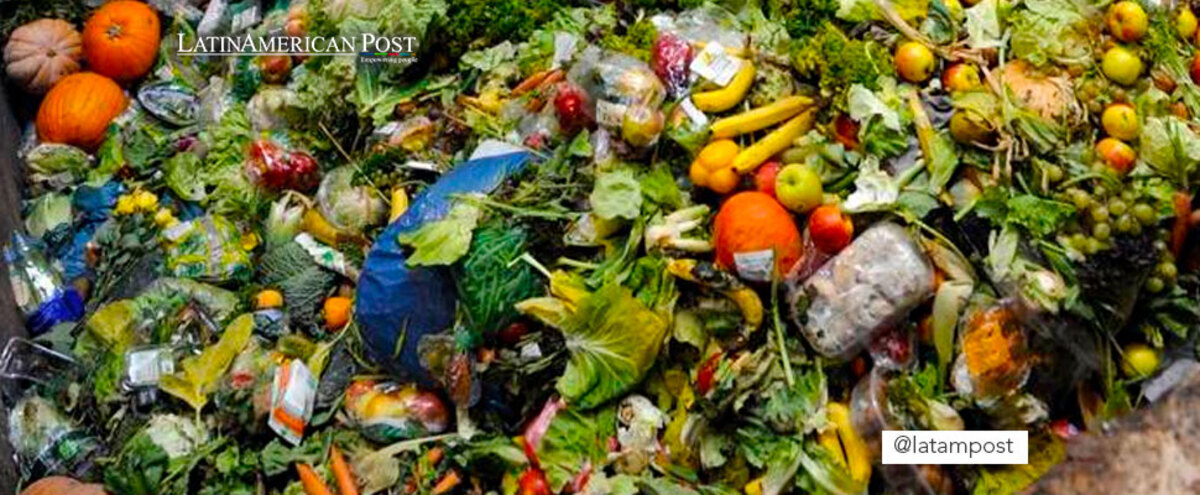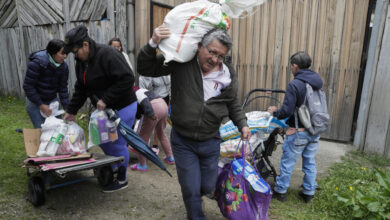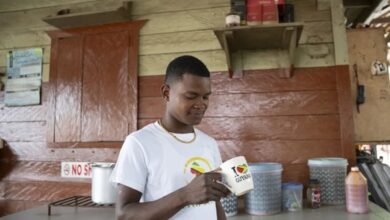Food Waste, An Environmental Problem In Latin America
In Colombia, about two million tons of food are wasted throughout the food process, from harvest to marketing, according to the WWF. This, in the midst of the climate crisis, poses a problem of food security.

Photo: FAO.org
LatinAmerican Post | Daniel Alejandro Vergara
Escucha este artículo
Leer en español: Desperdicio de alimentos, un problema ambiental en América Latina
Agriculture and extensive ranching are two of the main causes of global deforestation, which is why putting the processes of extraction, treatment, and sale of food into question is necessary to create more sustainable cultures related to food and promote healthier eating habits. According to the World Wide Fund for Nature (WWF) study: “In general, current diets have very little variety. In the world, the three main crops are rice, wheat, and corn. And although in history man has domesticated more than 6,000 species of land plants, it is estimated that two-thirds of all global crops are used for just 9 foods.
A report by the FAO (Food and Agriculture Organization of the United Nations), states that in the Latin American region about 42.5 million people are undernourished. That is, they have an insufficient food diet, low in protein, nutrients, and vitamins. This is framed as a contrast, since Latin America is one of the world's largest food exporters. However, it has a large number of people who are malnourished or starving. By 2018, this figure represented that about 223 kg of food was wasted per person per year.
The Inter-American Development Bank (IDB) affirms that in the region about 127 million tons of food are wasted annually, this problem occurs in all stages of the food chain: "This phenomenon occurs in production, where approximately 28 percent of food is wasted; in handling and storage 21 percent, and in distribution another 17 percent. At the consumption level (households, restaurants, and hotels), the amount of wasted food rises to 28 percent”.
The WWF investigation affirms that in Colombia this phenomenon is due not only to the lack of inter-institutional efforts but also to the relationship between the population and food. The report points out that about 65% of the people interviewed affirm that food production does not have a negative impact on nature. The research also indicates that due to social, cultural, and educational factors there is no awareness of the influence of food on climate change.
We recommend you read: Clean, Healthy And Sustainable Environment: A New Human Right
What can I do to make my diet more sustainable?
The first step is to be aware of the close relationship between the climate crisis and food production. In environmental matters, although it may not seem like it, everything is connected. Next, we will give you 10 tips that the WWF and the IDB propose to have a nutritionally good and environmentally sustainable diet. In this process, it is essential to avoid food waste, due to the high costs to the environment, as well as due to social inequality.
-
Eating more varied diets to expand the diversity of food that enters your kitchen will collaborate with the reduction of wasted food.
-
Local consumption, shopping in the market place and buying from nearby farmers will help reduce the gas emissions that vehicles, planes, and ships use to transport food.
-
Do not reject imperfect fruits or vegetables. Although it is true that they are foods of little durability, most of these are discarded while still edible. Remember! Even if its aesthetics are not the best, it can still be nutritious and delicious.
-
Buying harvested food not only helps your pocket but also reduces the oversupply of food.
-
Support the agroecological markets in your neighborhood or city. Although they are not many, there are markets that are aware of the environmental situation and that support food sustainability.
-
Reduce the consumption of foods wrapped in plastic, this material is unnecessary and, on the contrary, generates increased levels of contamination.
-
Shop at businesses that reuse food to create new products like beers, juices, and even textiles.
-
Try to buy foods that are minimally processed, those that have gone through long treatment processes tend not to have the minimum necessary nutrients for a proper diet.
-
Analyze where you are buying and what products are being bought, look at the labels and investigate which are the suppliers of the markets where you are buying.
-
Help raise awareness, the problem of food waste has to do with the lack of information. After putting the advice into practice, share it with your close circle.
Remember, if only one person does this, a substantial change may not be seen, but in environmental issues, the search for awareness and action by a large part of the population will generate new realities such as the reduction of deforestation and famine in Latin America. To see the entire WWF report, click HERE To follow the initiatives that the IDB is carrying out in Latin America.




